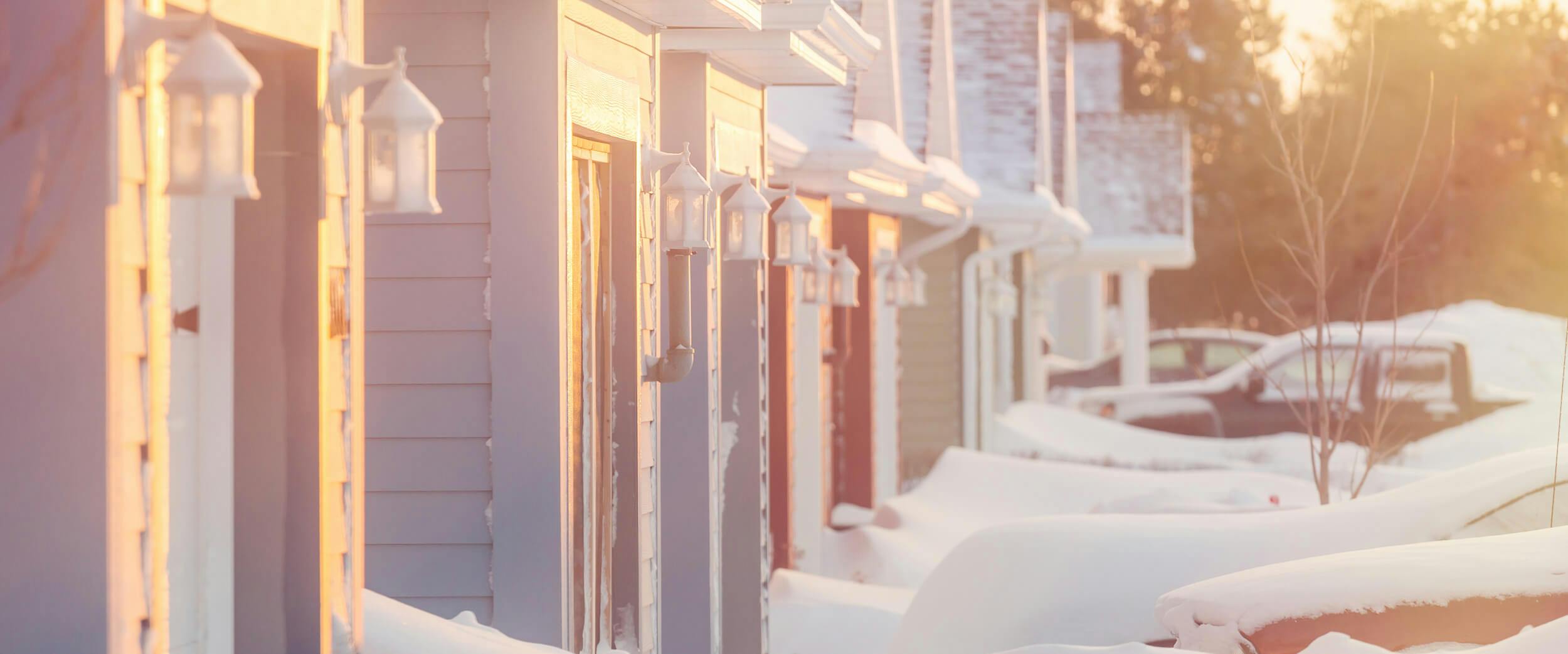
Winter is nearly upon us. The days are getting shorter and the chilly air is no doubt finding its way into your rental property, making your tenants uncomfortable and the heating bills increase.
Now is the time to think about winterizing rental properties to keep the heat in and your energy bills low. In fact, according to EnergyStar, proper winterization can save an average of 11 percent on energy bills.
Here’s a step-by-step guide to help you properly winterize your rental property. Think of it as your winterizing checklist!
#1: Check Windows and Doors
Windows and doors are notorious air leakers, especially if they’re older. If you do feel a draft, there are a few ways to block them up.
Install Storm Windows and Doors
There’s no need for screens in the winter. Replace them with storm windows and doors. They’ll add an extra barrier against the chilly winds.
Use Weatherstripping or Caulking
If you’re still feeling a draft, try using some weather stripping or caulking.
Caulking works well around loose panes of glass on single-pane windows. Just remember, a little goes a long way. Apply a bit in cracks in wood or gaps between glass and frames. Allow it to dry and then sand it down to keep it flush with the wood.
Weatherstripping is suitable for windows that are a little loose or doors that don’t quite fit in their frames. It comes in rolls of varying width, so make sure you know the size of your gap. Cut the stripping to fit, and apply the adhesive backing to the frame.
Shrink-Wrap It
In extreme cases, you can shrink-wrap the whole window or door. A kit that includes a thin plastic sheet and double-sided tape. Place the tape around the frame of your door or window and remove the backing. Apply the plastic sheet to the tape and cut to fit. Use a hair dryer to heat the plastic until it shrinks.
It’s great for keeping cold air out, but be warned: your tenant can’t open that door or window for the rest of the winter unless they want to break the plastic. If the door is a means of egress during an emergency, definitely don’t shrink-wrap it.
#2: Fill the Gaps
Although they’re the most obvious fix for winterizing rental properties, doors and windows aren’t the only cold-air culprits. Outlets and places where wires have been run in can also cause drafts. Fill those gaps with expanding insulating foam.
Just remember that, as with the caulk, a little really does go a long way. Spray a little into the gap and watch it expand. If you still see a space, spray a little more.
Filling those gaps serves another purpose: It helps keep out rodents, bugs and other creatures who may be looking to escape the cold.
#3: Cover or Remove AC Units
If you haven’t removed the AC units from the windows, now’s the time to do it. While some people put the shrink wrap over ACs, it’s not really a sound idea. Snow that collects on the unit could damage the system and put pressure on window frames.
Drain them and remove them until next year.
If it’s a wall unit, get insulated covers to keep the cold out. Just make sure you drain the unit first and keep the snow off.
#4: Insulate Pipes on Outside Walls
Exposed pipes that run along outside-facing walls are at risk of freezing. And the last thing you want in the dead of winter is a burst pipe. Cover your pipes with insulating foam.
If you’re really worried, you can get an electric heating cable that wraps around vulnerable pipes and keeps them just warm enough through the winter months.
#5: Check for the Less Obvious Air Leaks
According to AllState, the biggest sources of drafts come from less obvious places: attics and basements.
If your unit has an attic or crawl space, seal up gaps between walls, as well as gaps around attic doors or hatches. Blow in more insulation if you need it (you should have 10 to 14 inches, according to EnergyStar). And seal gaps around bathroom vents.
In the basement, AllState recommends sealing the place where the foundation meets the frame. Fill in cracks in the foundation, as well.
#6: Consider a Programmable or Smart Thermostat
Your tenants will love the convenience of a programmable thermostat, and you’ll love the money it can save on heating bills, if you’re the one paying them. A programmable thermostat can be set to a lower temperature during the day or at night when no one’s up and around. Set it to a higher temperature for mornings, evenings and weekends.
A smart thermostat can be monitored from a tenant’s phone. They can turn on the furnace as they leave work or lower the temperature on an unexpectedly warm day.
Whether you or your tenants pay the heating bills, winterizing rental properties will save money during the chilly months. And, perhaps more importantly, it will keep your tenants comfortable in their own home, reducing the need for hazardous alternatives like space heaters.
Seal up those drafts to keep everyone warm, safe and chipper!
